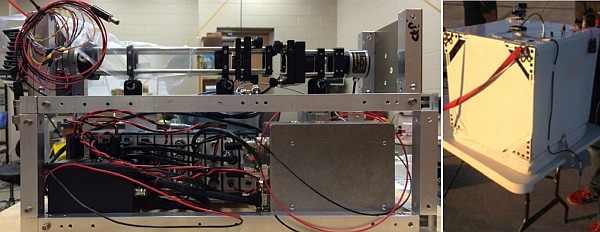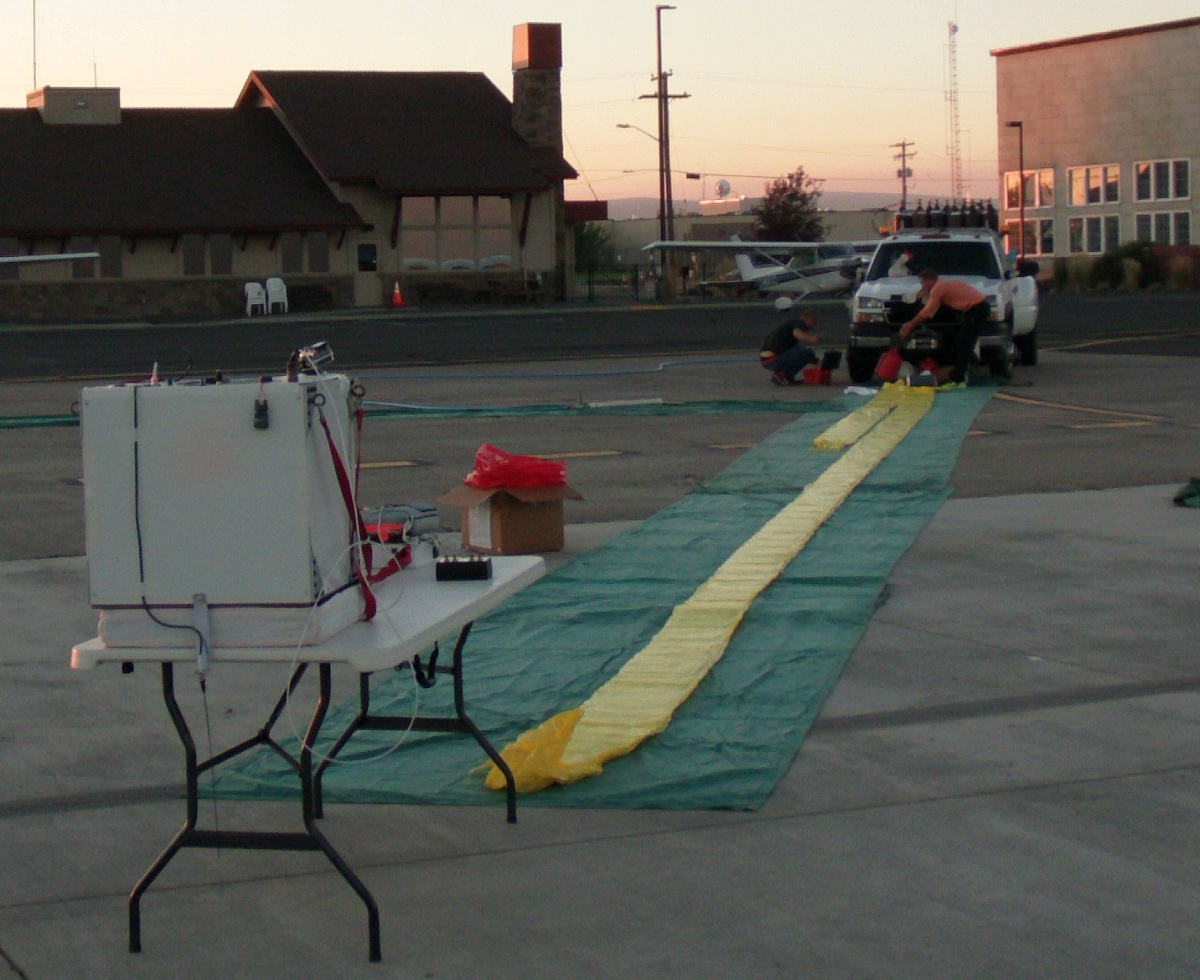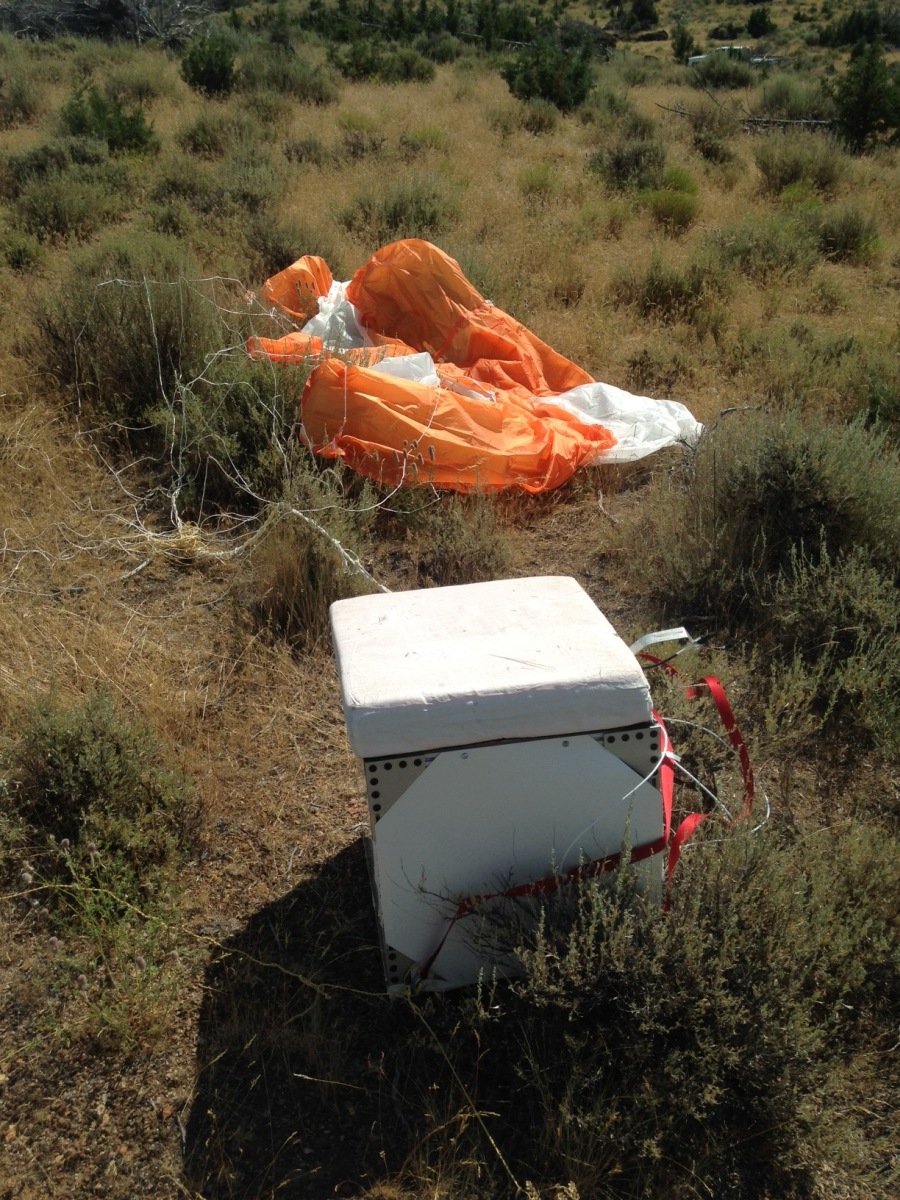Purpose of the flight and payload description
The Planetary Atmospheres Minor Species Sensor (PAMSS) is an intracavity laser absorption spectrometer that uses a mid-IR quantum cascade laser in an open external cavity for sensing ultra-trace gases and vapors. PAMSS can be tailored for sensing any molecule that has an infrared absorption band. It was developed at the Departament of Physics in the University of Central Florida.
The picture at left presents a photograph of PAMSS before the flight. The upper portion is the optics/laser/spectroscopic component. The lower portion is the electronics component.
The system comprises integrated laser/optical/spectroscopic and electronics/software units. Atmospheric samples enter the open external laser cavity, where active-cavity gain allows optical path length through the sample to exceed a kilometer due to multiple reflections between cavity mirrors that are separated by centimeters. This potentially gives exponentially higher sensitivity for ultra-trace gas detection than other instruments. Other potential planetary science applications include search for life on Enceladus and Europa, greenhouse chemistry on Venus, and compositional analysis for exotic atmospheres on Saturn's moon Titan. Earth science applications include detection and analysis of climate changing gases, ozone, acid rain, and air pollution. Terrestrial applications include medical breath tests to diagnose disease and explosives detection for public safety.
Details of the balloon flight
Balloon launched on: 7/17/2014
Launch site: Madras Municipal Airport, Oregon, US
Balloon launched by: Near Space Corporation (NSC)
Balloon manufacturer/size/composition: Zero Pressure Balloon
Flight identification number: SBS-08
End of flight (L for landing time, W for last contact, otherwise termination time): 7/17/2014
PAMSS was flown on a balloon by Near Space Corporation from Madras OR to 30 km on 17 July 2014. Flight objectives were to maintain an altitude of 27.4 km for at least 10 minutes, to monitor temperatures of key components, to record data on the status of the laser, the optical alignment, and the status of the electronics, and to collect the spectrum of a weak line of water vapor throughout the flight duration.
Flight objectives were achieved by maintaining an altitude higher of 30 km for 20 minutes. Successes of the payload operation included continuous functioning and survival of software, electronics, optics, laser, and optical alignment during the extreme conditions of flight and a hard landing.
Unfortunately, no valid data were collected on the laser voltage and detector channels. The suspected cause was electromagnetic interference from the balloon's telemetry system. The system proved susceptible to electromagnetic interference (EMI) due to its open architecture, absence of shielding, plastic joints on the frame, and long unshielded loops of wire.
External references
- Flight Opportunities program NASA website
- Planetary Atmospheres Minor Species Sensor (PAMSS) Proc. SPIE 9113, Sensors for Extreme Harsh Environments, 91130N
- Planetary atmospheres minor species sensor balloon flight test to near space Proc. SPIE 9491, Sensors for Extreme Harsh Environments II, 94910G
12721If you consider this website interesting or useful, you can help me to keep it up and running with a small donation to cover the operational costs. Just the equivalent of the price of a cup of coffee helps a lot.





